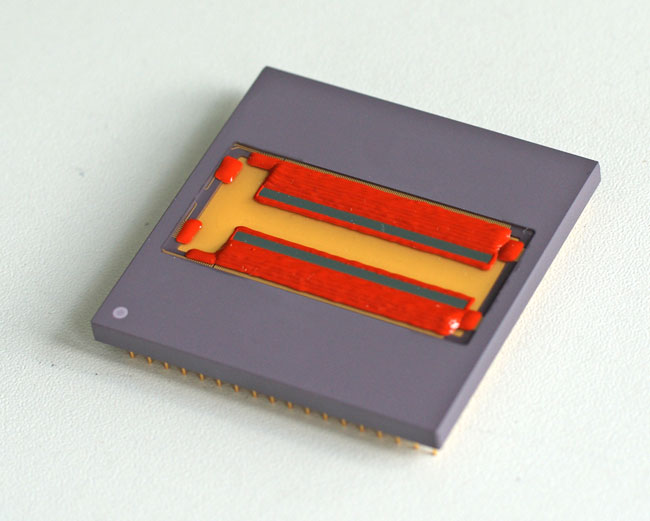New Possibilities for Ultrasonic Sensors - Fraunhofer IPMS demonstrates ultrasonic transducers as MEMS array
For several years, scientists at the Fraunhofer Institute for Photonic Microsystems (IPMS) in Dresden have been using microsystem manufacturing technologies to develop and produce capacitive ultrasonic transducers as MEMS structures, known as Capacitive Micro-machined Ultrasonic Transducers (CMUTs). These can be constructed in compact array arrangements and can potentially supplement future technologies and open new fields of application. The Fraunhofer IPMS will introduce a system demonstrator showing CMUT transducer operation to the professional field at the Sensors Expo and Conference being held 10-11 June, 2015.
Ultrasonic transducers send and detect high-frequency, humanly-inaudible sound signals in order to, for example, measure the inside of objets with millimeter precision. The physical principle allows for the reliable use of ultrasound for diverse materials regardless of physical condition, shape and color under almost all circumstances and in virtually any environment. Therefore, it is not surprising that ultrasonic sensors are already widely used everyday to help drivers park their cars, determine filling levels in the beverage industry or act as a camera providing insight to the study of embryos in the womb.
However, there are application scenarios in which the prevailing systems made up of piezoelectric materials are unable to exploit the measuring principle potential. In fact, common piezoelectric elements cannot be readily and cost-efficiently manufactured as large arrays, and have low sensitivity comparing to CMUTs when receiving ultrasound signals. It is different with capacitive ultrasonic transducers manufactured with microsystem technology methods such as those developed and produced by Fraunhofer scientists in the Fraunhofer IPMS clean room. CMUTs can be monolithically fabricated as an array allowing, for example, the directional control and shaping of the ultrasound propagation and the scanning of a line or area.
Jörg Amelung, MEMS Business Manager at the Fraunhofer IPMS describes the state of research at the institute, “We first work on larger arrays of up to 256 channels. He adds, “The CMUT elements developed at the institute are between 10 and 100 micrometers in size with frequencies ranging from 1 to 50 megahertz and due to the manufacturing process, show a very low 5 percent resonant frequency variation (in air) from the center frequency. This is a basic prerequisite in achieving a high-quality sound field with CMUT arrays. Such array structures are ideal for imaging ultrasound systems used in the medical or non-destructive testing fields.”
In addition to generating ultrasound, CMUTs can convert acoustic energy into electrical signals that can be later acquired and processed. The high sensitivity in receive operation together with the broadband response of the CMUTs, enable new ultrasound applications. CMUTs also offer the possibility of monolithic integration with CMOS backplanes, as they are fabricated using micromachining techniques.
The Fraunhofer IPMS will showcase an example of a CMUT-based application demonstrating particle detection within a fluid environment at the 2015 Sensors Expo and Conference. Visitors can find the exhibition at Stand 339 in Hall B of the Long Beach Convention Center.
 Fraunhofer Institute for Photonic Microsystems
Fraunhofer Institute for Photonic Microsystems